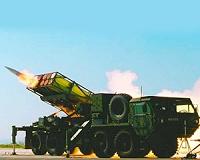| . |  |
. |
Orlando FL (SPX) Jan 05, 2011 Lockheed Martin has successfully completed a comprehensive series of tests to demonstrate the flight characteristics of the U.S. Navy's F/A-18E/F while carrying the Joint Air-to-Ground Missile (JAGM). The flying qualities test series consisted of six flights from Patuxent River Naval Air Station, MD, between October 5 and November 2 with a total flying time of 11.2 hours. The aircraft flew at altitudes ranging from 5,000 feet to 35,000 feet and at speeds approaching Mach 1.0. During each flight, the Super Hornet was refueled in the air by a support tanker to enable the aircraft to reach all the required speeds and altitudes at which JAGM had to be tested. The JAGM test articles were six instrumented measurement vehicles (IMVs) equivalent in weight, size and dimensions to tactical JAGM rounds and outfitted with resistive temperature devices, acoustic sensors and accelerometers to measure the flight environments experienced by the launchers and the missiles. Three IMVs were loaded onto each of two new Navy fixed-wing triple-rail launchers designed and manufactured by Lockheed Martin and Marvin Engineering to carry JAGM on the F/A-18E/F. Fully outfitted, the Super Hornet could be configured to carry 18 JAGMs, as opposed to just four of the Maverick air-to-ground missiles that JAGM will replace. For the flight series, the two "three-packs" of JAGM IMVs were carried at the most challenging stations-outboard and midboard-in varying load-out combinations with other weapon systems including bombs, anti-radiation missiles and air-to-air missiles, as well as external fuel tanks. "The F/A-18E/F presents some of the most challenging environments for JAGM," said Hady Mourad, JAGM program director at Lockheed Martin Missiles and Fire Control. "Collecting vibration, acoustic and shock data in these environments for 11.2 hours of flight with no anomalies or problems represents a very successful beginning of flight test efforts that will continue into the EMD phase to integrate JAGM on the Super Hornet." Lockheed Martin's Deputy Program Director Rick Packard, who is responsible for integrating JAGM with Navy platforms, said the company was very pleased with the results of the flying qualities tests. "When you couple the highly successful outcome of these flying quality tests with our previous hot and cold temperature missile motor tests, we remain confident in our ability to provide our customers with a single-missile-motor offering for JAGM, a critical capability voiced by all three Services since the inception of the joint program." "One of the key tenets of the JAGM program is to replace three aging weapon systems and their associated parts, supply and logistics networks with one weapon to increase operational flexibility and reduce support costs," Packard said. "We remain steadfastly committed to meeting that requirement." Threshold aviation platforms include the U.S. Army's AH-64D Apache attack helicopter, the Army's Extended Range Multi-Purpose (ERMP) Sky Warrior unmanned aerial system, the U.S. Marine Corps' AH-1Z Super Cobra attack helicopter, the U.S. Navy's MH-60R Seahawk armed reconnaissance helicopter and the Navy's F/A-18E/F Super Hornet jet fighter. The tri-service Joint Strike Fighter also is under consideration as an objective platform. The initial operational capability of JAGM on the AH-64D, AH-1Z and F/A-18E/F is scheduled for 2016, and the IOC for the MH-60R and ERMP is 2017.
Share This Article With Planet Earth
Related Links - Learn about missile defense at SpaceWar.com All about missiles at SpaceWar.com
 Taiwan will not deploy advanced rockets near China: report
Taiwan will not deploy advanced rockets near China: reportTaipei (AFP) Jan 3, 2011 Taiwan has decided not to deploy a new powerful rocket system on outlying islands near China, deeming it unnecessary in the context of fast warming ties with Beijing, local media reported Monday. Taiwan is scheduled to start mass-producing the multiple launch rockets this year after having spent more than a decade researching the system, called Ray Ting 2000 or "Thunder 2000", the Taipei-bas ... read more |
|
| The content herein, unless otherwise known to be public domain, are Copyright 1995-2010 - SpaceDaily. AFP and UPI Wire Stories are copyright Agence France-Presse and United Press International. ESA Portal Reports are copyright European Space Agency. All NASA sourced material is public domain. Additional copyrights may apply in whole or part to other bona fide parties. Advertising does not imply endorsement,agreement or approval of any opinions, statements or information provided by SpaceDaily on any Web page published or hosted by SpaceDaily. Privacy Statement |